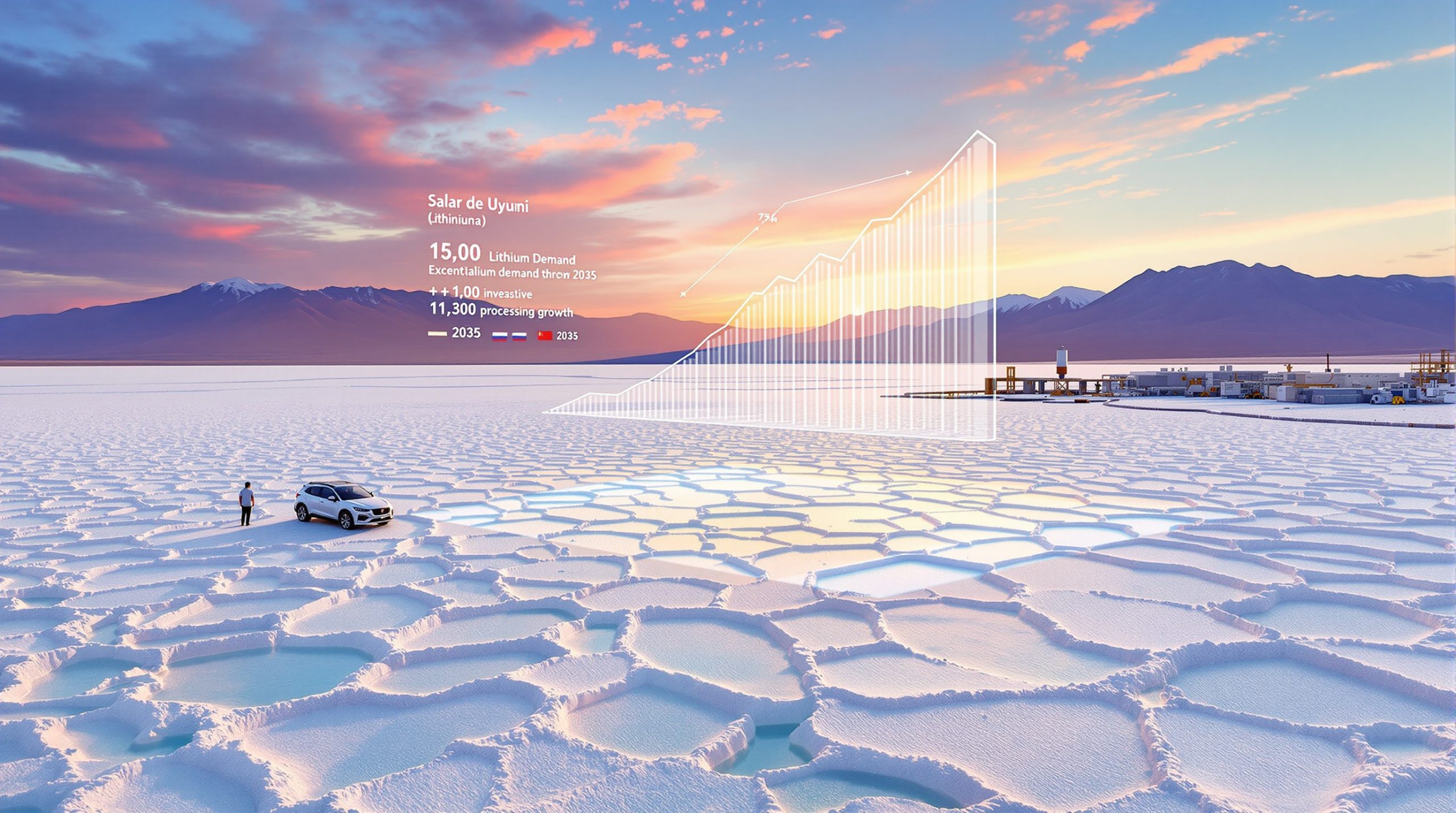Understanding the ASX 200 Resource Sector Rally: Infratil, Iluka Resources, and Lynas Rare Earths
The Australian stock market has seen significant movements recently, with several key resource sector players outperforming the broader index. Despite the S&P/ASX 200 Index falling 0.91% to 8,551.7 points, three notable companies have bucked the trend with impressive gains. Let's examine the factors behind why Infratil, Iluka Resources and Lynas Rare Earths shares are jumping higher today and what might lie ahead for investors.
Market Context: ASX 200's Recent Performance
The broader Australian market has experienced downward pressure following poor trading sessions in the US. This negative sentiment has affected most sectors, yet certain resource and infrastructure stocks are demonstrating remarkable resilience and growth potential.
While the overall index retreated, Infratil, Iluka Resources, and Lynas Rare Earths have demonstrated exceptional strength, with 5-day gains of up to 24% in Iluka's case, highlighting how sector-specific factors can override general market sentiment.
Why Is Infratil (ASX: IFT) Share Price Rising?
Index Inclusion Driving Investor Interest
Infratil shares have jumped 4.25% to $10.30, continuing a positive trend that has seen the stock rise 9.33% year-to-date. This New Zealand-based infrastructure investment company has caught investor attention following a significant announcement regarding its inclusion in the ASX 200 Index.
Strategic Index Replacement
The catalyst for Infratil's recent surge is S&P Dow Jones Indices' announcement that the company will replace Spartan Resources Limited (ASX: SPR) in the prestigious ASX 200 Index. This change, effective prior to trading on July 23, follows Spartan's pending acquisition by Ramelius Resources Limited (ASX: RMS).
Investment Implications of Index Inclusion
Index inclusion typically drives substantial buying pressure as index funds and ETFs tracking the ASX 200 must purchase shares to maintain accurate index representation. Historical data suggests that passive funds typically need to acquire approximately $150 million AUD worth of shares for typical ASX 200 additions.
For Infratil, this represents not just immediate price appreciation but potentially improved liquidity and broader investor exposure moving forward. Companies added to major indices often experience a 15-30% increase in trading liquidity post-inclusion, which can reduce volatility and improve institutional interest.
Investment Note: While index inclusion typically provides short-term price support, investors should be wary of potential "buy the rumor, sell the news" patterns that can emerge after the official inclusion date.
How Is Iluka Resources (ASX: ILU) Performing?
Impressive Short-Term Recovery
Iluka Resources shares have climbed 4.59% to $4.89, representing a remarkable 24.24% increase over just five trading days. This recent rally has helped offset some of the stock's longer-term underperformance, though it remains 27.70% lower over the past year.
Strategic Position in Critical Minerals
As a global mineral mining company, Iluka Resources holds significant market share in essential materials:
- 20% of global zircon supply
- 10% of global titanium minerals supply (primarily rutile and chloride ilmenite)
- Growing presence in rare earth elements
- Core operations centered in Western Australia
The company's diversified portfolio provides exposure to both traditional mineral sands markets and high-growth rare earths applications, creating a balanced risk profile compared to pure-play competitors. Furthermore, Iluka's strategic focus on the critical minerals energy transition places it in an advantageous position as global demand increases.
Analyst Endorsement Driving Confidence
Macquarie Group has recently highlighted Iluka Resources as a top ASX 200 pick, placing an outperform rating and $6.50 price target on the stock—representing a potential 33% upside over the next 12 months.
The broker's confidence stems from their assessment that Iluka's strategic shift toward rare earth elements positions the company well in markets essential for energy transition technologies and defense applications. This alignment with Australia's emerging defence critical materials strategy has further strengthened investor confidence.
Balrnald Project: Future Growth Catalyst
The broker's bullish outlook stems largely from expectations surrounding Iluka's Balrnald Critical Minerals Project in New South Wales. This development is anticipated to become a significant global source of:
- High-grade mineral sands
- Rare earth elements
- Revenue that could exceed current market estimates
The project represents one of Australia's most significant developments in the critical minerals strategy space, with Iluka's integrated approach to mining and processing providing vertical integration advantages over competitors.
What's Behind Lynas Rare Earths' (ASX: LYC) Momentum?
Sustained Rally Continues
Lynas Rare Earths shares have added another 1.25% today, reaching $10.14. This extends an impressive run that has seen the stock surge 23.21% over the past five trading days and 60.95% over the year, making it one of the ASX's best-performing resource stocks.
Strategic Significance in Global Supply Chains
As the largest rare earths materials producer outside of China, Lynas occupies a strategically vital position in global supply chains for these critical materials. The company's importance has been highlighted by recent geopolitical developments.
Lynas's Mt Weld mine in Western Australia contains some of the world's highest-grade rare earth deposits, providing the company with cost advantages and supply security that investors increasingly value in an uncertain geopolitical environment.
Pentagon Deal Implications
While Lynas itself hasn't made any price-sensitive announcements recently, the market appears to be reacting to broader industry developments. Last week, US-based competitor MP Materials (NYSE: MP) announced a significant deal with the Pentagon, which will acquire a 15% stake in the company.
This transaction signals growing Western government interest in securing non-Chinese rare earth supply chains and has positive implications for Lynas as the most established non-Chinese producer with fully integrated operations from mine to finished product.
Strategic Security Considerations
The Pentagon's investment in MP Materials signals growing Western government interest in securing rare earth supply chains outside of Chinese control. With China controlling approximately 70% of global rare earths refining capacity, Western nations face significant supply vulnerabilities in materials essential for advanced military systems and green technology.
As the largest non-Chinese producer, Lynas stands to benefit from similar strategic partnerships and investments as nations prioritize resource security. The company's existing relationships with Japanese partners and growing interest from European manufacturers further strengthen its strategic position. In addition, recent developments in Greenland critical minerals exploration have heightened interest in non-Chinese rare earth sources globally.
How Do These Stocks Compare as Investment Opportunities?
Performance Comparison Table
| Company | Recent Price Movement | YTD Performance | 12-Month Performance | Key Catalyst | Beta |
|---|---|---|---|---|---|
| Infratil (IFT) | +4.25% | +9.33% | Not specified | ASX 200 Index inclusion | 0.75 |
| Iluka Resources (ILU) | +4.59% | Not specified | -27.70% | Balrnald Project & analyst upgrade | 1.32 |
| Lynas Rare Earths (LYC) | +1.25% | Not specified | +60.95% | Strategic position & industry developments | 1.68 |
Investment Characteristics
Each company presents distinct investment characteristics:
-
Infratil: Infrastructure investment company with diverse holdings spanning renewable energy, data centers, and utilities. Its lower beta of 0.75 suggests lower volatility than the broader market, appealing to more conservative investors seeking diversified exposure to critical infrastructure.
-
Iluka Resources: Established mineral sands producer with significant growth potential in rare earths. The company offers a balanced risk profile with current production revenue streams funding future growth initiatives.
-
Lynas Rare Earths: Pure-play rare earths producer with strategic significance in global supply chains. Its higher beta of 1.68 reflects greater volatility and sensitivity to rare earth prices and geopolitical developments, making it suitable for investors with higher risk tolerance seeking maximum exposure to rare earth market dynamics.
Risk-Reward Assessment
When considering these investments, investors should assess not just recent performance but fundamental factors:
-
Infratil offers the lowest volatility with stable infrastructure assets but potentially more modest growth compared to mining companies.
-
Iluka Resources provides a middle-ground approach with established mineral sands operations funding higher-growth rare earths initiatives.
-
Lynas Rare Earths presents the highest growth potential but with correspondingly higher risk due to its concentrated exposure to rare earth markets and processing operations.
What Factors Are Driving the Broader Resources Sector?
Critical Minerals Strategic Importance
The performance of companies like Iluka Resources and Lynas Rare Earths highlights growing recognition of critical minerals' strategic importance. These materials are essential for:
- Renewable energy technologies (wind turbines, solar panels)
- Electric vehicles (motors, batteries)
- Defense applications (guidance systems, radar)
- High-tech manufacturing (semiconductors, displays)
The global rare earths market alone is projected to reach $15.5 billion by 2028, growing at a compound annual growth rate of 10.2% as demand for specialized magnets and electronic components accelerates.
Government Support and Investment
Governments worldwide are increasingly supporting domestic critical minerals projects through:
- Direct investments (Australia's $2 billion Critical Minerals Facility)
- Strategic partnerships (U.S.-Japan-Australia Trilateral Partnership)
- Favorable regulatory frameworks (expedited permitting)
- Supply chain security initiatives (U.S. Defense Production Act invocations)
Australia's Critical Minerals Strategy 2023-2030 specifically targets expanding domestic processing capacity to capture more value from the mineral supply chain, benefiting companies with integrated operations like Iluka and Lynas.
Market Positioning Outside China
Companies with significant production capabilities outside China are particularly well-positioned as Western nations seek to reduce dependence on Chinese supplies of critical minerals.
With China controlling approximately 70% of global rare earths processing capacity, established non-Chinese producers command significant premium valuations. The U.S. Inflation Reduction Act's domestic content requirements for critical minerals further advantage Australian producers with existing operations and offtake agreements.
What Should Investors Watch for Next?
Key Indicators for Future Performance
Investors monitoring these companies should watch for:
-
Production updates: Particularly for Iluka and Lynas, as output volumes directly impact revenue and demonstrate operational execution.
-
Project development milestones: Especially Iluka's Balrnald Project progress, including environmental approvals, construction timelines, and capital expenditure tracking.
-
Government policy announcements: Regarding critical minerals and rare earths, including funding programs, tariffs, or trade policies affecting global supply chains.
-
Strategic partnerships: Similar to MP Materials' Pentagon deal, with potential for offtake agreements, equity investments, or joint ventures that secure future revenue streams.
-
Commodity price movements: Particularly for zircon, titanium minerals, and rare earth elements, with special attention to the neodymium-praseodymium (NdPr) price that most directly impacts Lynas's revenue.
Potential Risks to Consider
While these stocks show promising momentum, investors should be aware of potential risks:
-
Commodity price volatility: Resource companies remain exposed to market fluctuations, with rare earth prices historically experiencing swings of 30-50% within 12-month periods.
-
Project development challenges: New mining and processing facilities often face delays and cost overruns. Iluka's Balrnald Project and Lynas's processing expansion plans require careful monitoring for execution risks.
-
Geopolitical tensions: Particularly relevant for strategically important minerals, with potential for trade restrictions, export controls, or retaliatory measures affecting global supply chains.
-
Chinese market dominance: China remains the dominant player in rare earths processing and production, with the capacity to influence global prices through policy decisions, production quotas, or export controls.
-
Technological substitution: Research into alternatives to critical minerals could reduce long-term demand, though most industry experts believe such substitutions remain years from commercial viability.
Risk Assessment Note: The concentration of processing capability in China represents both a risk and opportunity for non-Chinese producers. While Chinese policy decisions can affect global markets, this same concentration creates premium valuations for diversification sources like Lynas and Iluka.
FAQ: Resource Sector Investment Questions
How do index inclusions typically affect share prices?
Index inclusions generally provide both immediate and long-term benefits. Initially, passive funds tracking the index must purchase shares, creating buying pressure that typically results in 3-7% price appreciation in the announcement-to-implementation period.
Longer-term, inclusion increases visibility, liquidity, and institutional interest in the stock. Trading volumes typically increase 15-30% post-inclusion, while analyst coverage often expands, providing additional market support.
What makes rare earth elements strategically important?
Rare earth elements are critical components in technologies ranging from smartphones and wind turbines to electric vehicles and military equipment. Their unique magnetic, luminescent, and electrochemical properties make them difficult to substitute, while production is currently dominated by China.
Particularly important are elements like neodymium and dysprosium, which create the world's strongest permanent magnets—essential for electric vehicle motors, wind turbine generators, and precision-guided munitions. A single F-35 fighter jet contains approximately 417 kg of rare earth materials.
How might government initiatives impact these companies?
Government initiatives to secure critical mineral supply chains could benefit these companies through direct investments, offtake agreements, grants for processing facilities, and expedited permitting processes. Such support can significantly reduce project risks and improve economic viability.
Australia's $2 billion Critical Minerals Facility specifically targets companies developing processing capability within Australia, directly benefiting Iluka and Lynas. Similarly, the U.S. Defense Production Act provides funding for companies supporting defense supply chains, which includes rare earth producers.
What differentiates Iluka Resources from other mineral producers?
Iluka Resources combines established production of traditional mineral sands (zircon and titanium minerals) with emerging capabilities in rare earth elements. This diversification provides both stable revenue streams and exposure to high-growth markets.
The company's vertical integration strategy—developing capability across mining, separation, and processing—creates a competitive advantage over pure mining companies. Additionally, Iluka's Australian operations provide geopolitical security advantages over producers in less stable jurisdictions.
Further Exploration:
Readers interested in learning more about ASX 200 resource sector movements can also explore related educational content from financial news sources such as The Motley Fool Australia, which regularly covers developments in the Australian resources sector.
For those seeking deeper analysis of critical minerals supply chains, industry publications like Mining.com and government resources such as Geoscience Australia provide valuable insights into market dynamics and geological factors influencing these strategically important commodities. The ongoing mining industry evolution continues to create new opportunities for informed investors.
Want to Be Alerted to the Next Major Mineral Discovery?
Don't miss potentially transformative investment opportunities on the ASX. Discovery Alert's proprietary Discovery IQ model delivers real-time notifications of significant mineral discoveries, turning complex data into actionable insights for traders and investors. Explore historic returns of major discoveries at Discovery Alert's discoveries page and position yourself ahead of the market.




